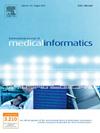员工对精神病患者服务中实施数字远程监测的期望:一项使用正常化过程理论的定性研究
IF 4.1
2区 医学
Q2 COMPUTER SCIENCE, INFORMATION SYSTEMS
International Journal of Medical Informatics
Pub Date : 2025-07-09
DOI:10.1016/j.ijmedinf.2025.106040
引用次数: 0
摘要
数字远程监控(DRM)利用智能手机和可穿戴设备等设备远程收集与健康相关的数据,为精神病患者的心理健康状况提供见解。这些数据可以与精神卫生服务机构共享,以帮助临床评估。已经发现DRM可以有效地识别精神病复发的早期迹象,使临床医生能够更早地进行干预并改善服务使用者的结果。然而,它在服务中的实现存在挑战。本研究以正常化过程理论(NPT)为框架,考察精神卫生专业人员对精神病护理中实施DRM的障碍和促进因素的期望。方法采用半结构化访谈法,对来自9个英国国家卫生服务精神卫生信托基金/健康委员会的59名多学科精神卫生专业人员进行访谈。对访谈进行归纳主题分析,然后通过将主题映射到NPT的核心结构进行演绎分析。研究结果在所有情况下都是相似的,并适用于三个NPT结构(连贯性、认知参与和集体行动)及其子组成部分。一个归纳主题,“自己的技术经验”并没有被《不扩散核武器条约》抓住。参与者理解DRM用于检测早期复发迹象的目的。然而,实施的几个障碍被确定:专业角色的不确定性、资源问题、对不准确的DRM数据的担忧、技术的复杂性、安全/隐私问题以及对在某些临床表现中使用DRM的担忧。建议的实施策略包括员工培训和持续的技术支持,制定有关专业人员职责的指导,使用内部“DRM专家”领导其在服务中的整合,增强临床医生对精神病护理中DRM证据基础的了解,并积极让临床医生和服务用户参与DRM系统的开发。研究结果确定了在常规护理中早期成功采用DRM的关键因素和可操作的实施策略。通过解决这些问题,可以优化实施效果,最终改善精神病患者的治疗结果。资助:惠康信托基金,国家健康与护理研究所。本文章由计算机程序翻译,如有差异,请以英文原文为准。
Staff expectations for the implementation of digital remote monitoring in services for people with psychosis: A qualitative study using normalisation process theory
Background
Digital remote monitoring (DRM) utilises devices such as smartphones and wearables to remotely collect health-related data, providing insights into the mental health of individuals with psychosis. This data can be shared with mental health services to aid clinical assessment. DRM has been found to effectively identify early signs of psychosis relapse, enabling clinicians to intervene earlier and improve outcomes for service users. However, there are challenges to its implementation in services. This study used Normalisation Process Theory (NPT) as a framework to examine mental health professionals’ expectations regarding the barriers and facilitators to implementing DRM in psychosis care.
Methods
Semi-structured interviews were conducted with 59 multi-disciplinary mental health professionals from nine UK National Health Service mental health Trusts/Health Boards. Interviews were inductively thematically analysed, then deductively analysed by mapping themes to the core constructs of NPT.
Findings
Findings were similar across all settings and applicable to three NPT constructs (coherence, cognitive participation and collective action) and their subcomponents. One inductive theme, ‘own experiences of technology’ was not captured by NPT. Participants understood DRM’s purpose for detecting early signs of relapse. However, several barriers to implementation were identified: uncertainty about professional roles, resource issues, concerns about inaccurate DRM data, complexity of the technology, security/privacy issues, and concerns about using DRM with certain clinical presentations. Suggested implementation strategies included staff training and ongoing technical support, developing guidance regarding professionals’ responsibilities, using an in-house ‘DRM expert’ to lead its integration within services, enhancing clinician’s knowledge of the evidence base for DRM in psychosis care, and actively involving both clinicians and service users in DRM system development.
Interpretation
Findings identify key factors and actionable implementation strategies essential for successful early adoption of DRM in routine care. By addressing these considerations, implementation effectiveness can be optimised, ultimately improving outcomes for people with psychosis.
Funding
Wellcome Trust, National Institute for Health and Care Research.
求助全文
通过发布文献求助,成功后即可免费获取论文全文。
去求助
来源期刊

International Journal of Medical Informatics
医学-计算机:信息系统
CiteScore
8.90
自引率
4.10%
发文量
217
审稿时长
42 days
期刊介绍:
International Journal of Medical Informatics provides an international medium for dissemination of original results and interpretative reviews concerning the field of medical informatics. The Journal emphasizes the evaluation of systems in healthcare settings.
The scope of journal covers:
Information systems, including national or international registration systems, hospital information systems, departmental and/or physician''s office systems, document handling systems, electronic medical record systems, standardization, systems integration etc.;
Computer-aided medical decision support systems using heuristic, algorithmic and/or statistical methods as exemplified in decision theory, protocol development, artificial intelligence, etc.
Educational computer based programs pertaining to medical informatics or medicine in general;
Organizational, economic, social, clinical impact, ethical and cost-benefit aspects of IT applications in health care.
 求助内容:
求助内容: 应助结果提醒方式:
应助结果提醒方式:


